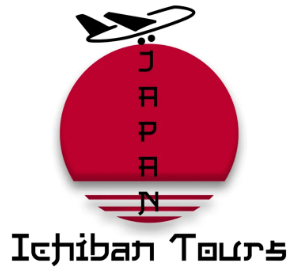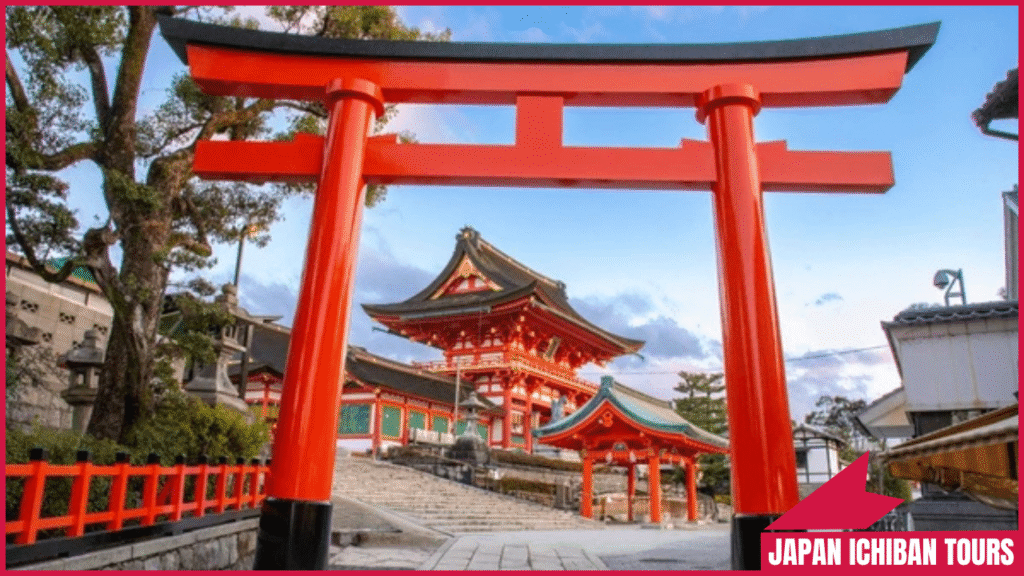Planning a trip to Japan in 2025? These 10+ genius travel hacks will transform your journey, making it seamless, budget-friendly, and deeply immersive.
From mastering Japan’s intricate transportation system to uncovering hidden cultural gems, this comprehensive guide offers practical tips to enhance your adventure.
Elevate your experience with curated tours like the Kyoto Fushimi Inari Shrine and Mount Inari Guided Tour and the Kyoto & Osaka Amanohashidate and Ine Bay Day Trip, designed to showcase Japan’s iconic and off-the-beaten-path destinations.
Understanding Japan’s Travel Landscape
Japan blends cutting-edge technology with ancient traditions, creating a unique travel experience that can feel overwhelming without the right approach. Whether you’re wandering Tokyo’s bustling streets, exploring Kyoto’s serene temples, or venturing to the scenic Ine Bay, these hacks simplify navigation, save money, and deepen your cultural connection. Let’s dive into practical strategies to make your 2025 trip unforgettable.
Transportation Hacks for Seamless Travel
1. Unlock Japan’s Rail System with IC Cards
Japan’s public transportation is world-renowned for its efficiency, but its complexity can daunt first-timers. Rechargeable IC cards like Suica, Pasmo, or ICOCA are your key to hassle-free travel across trains, buses, and even some taxis. These cards, available at major stations or airports like Narita and Haneda, cost around ¥2,000 (¥1,500 stored value + ¥500 refundable deposit). For added convenience, add them to your phone’s digital wallet.
- How to Use: Tap the card on readers at station gates or bus terminals. Reload funds at ticket machines or via apps like Apple Pay.
- Why It’s Essential: IC cards streamline travel, especially for tours like the Kyoto Fushimi Inari Shrine and Mount Inari Guided Tour, where you’ll hop between Kyoto’s local trains and buses.
2. Save Big with Regional Rail Passes
The Japan Rail (JR) Pass saw a price hike in 2023, making it less cost-effective for short trips. Instead, opt for regional passes tailored to your itinerary. For example, the JR Kansai Area Pass, covering Kyoto, Osaka, and Nara, is ideal for day trips like the Kyoto & Osaka Amanohashidate and Ine Bay Day Trip.
| Pass Name | Coverage Area | Cost (Adult) | Duration | Best For |
|---|---|---|---|---|
| JR Kansai Area Pass | Kyoto, Osaka, Nara | ~$50 | 1–4 days | Cultural hubs, coastal trips |
| JR East Tohoku Pass | Tokyo, Sendai, Aomori | ~$140 | 5 days | Northern Japan exploration |
| JR Hokkaido Pass | Sapporo, Hakodate | ~$120 | 3–7 days | Scenic northern routes |
- Pro Tip: Plan your itinerary to maximize pass usage, especially for multi-city trips.
3. Travel Light with Luggage Forwarding
Japan’s trains, while efficient, aren’t designed for large luggage. Use takkyubin services (like Yamato or Sagawa) to send bags to your next hotel or destination for ~$15–$25 per suitcase. This is a game-changer for hands-free exploration, especially during guided experiences like the Kyoto Fushimi Inari Shrine and Mount Inari Guided Tour.
- Where to Access: Airports, hotels, and convenience stores offer takkyubin counters.
- Delivery Time: Same-day or next-day delivery in major cities; 2–3 days for rural areas.
Cultural Hacks for Authentic Experiences
4. Learn Basic Japanese Phrases
While English signage is common in urban areas, knowing a few Japanese phrases enhances interactions with locals. Phrases like “Sumimasen” (excuse me) or “O-neeto” (the bill, please) show respect and make dining or shopping smoother, especially during cultural tours like the Kyoto & Osaka Amanohashidate and Ine Bay Day Trip.
| Phrase | Translation | Context |
|---|---|---|
| Konnichiwa | Hello | Greeting locals |
| Domo arigatou | Thank you | Expressing gratitude |
| Doko desu ka? | Where is it? | Asking for directions |
- Pro Tip: Use apps like Duolingo or Google Translate to practice phrases offline.
5. Master Japanese Etiquette
Japan’s culture emphasizes respect and harmony. Avoid common mistakes like tipping (it’s not customary) or speaking loudly on trains. When visiting sacred sites during the Kyoto Fushimi Inari Shrine and Mount Inari Guided Tour, bow slightly at shrines and avoid eating while walking.
- Key Rules:
- Remove shoes before entering homes or traditional ryokan.
- Don’t stick chopsticks upright in rice (it resembles a funeral ritual).
- Queue orderly for trains and escalators.
6. Embrace Onsen Etiquette
Japan’s hot springs (onsen) offer relaxation, but they have strict rules. Wash thoroughly before entering communal baths, and avoid bringing towels into the water. Many onsen near Kyoto, accessible during the Kyoto & Osaka Amanohashidate and Ine Bay Day Trip, provide beginner-friendly experiences.
- Cost: ~$5–$15 per entry.
- Pro Tip: Check for tattoo policies, as some onsen restrict entry for tattooed guests.

Budget Hacks to Stretch Your Yen
7. Dine Smart at Convenience Stores
Japan’s convenience stores (konbini) like 7-Eleven, Lawson, and FamilyMart are treasure troves for affordable, high-quality meals. Onigiri (rice balls), bento boxes, and sandwiches cost $2–$5, making them perfect for budget travelers.
- Viral Hack: Combine konbini fried chicken with pancakes for a DIY “McGriddles” (~$3).
- Pro Tip: Look for seasonal items, like sakura-themed snacks in spring, to enhance your experience.
8. Maximize Tax-Free Shopping
Tourists can enjoy a 10% tax exemption on purchases over ¥5,000 at stores with a “Tax-Free Shop” logo. Present your passport at checkout, but note that from November 2026, refunds will require tax exemption counters. Stock up on souvenirs during trips like the Kyoto & Osaka Amanohashidate and Ine Bay Day Trip.
- Eligible Items: Electronics, clothing, cosmetics, and souvenirs.
- Pro Tip: Keep receipts for customs checks when leaving Japan.
9. Choose Budget Accommodations
Japan offers affordable lodging options beyond traditional hotels. Capsule hotels (~$20–$30/night) are clean and private, ideal for solo travelers. Hostels (~$15–$25/night) cater to backpackers, while love hotels (~$40–$80/night) offer quirky, private rooms for couples.
| Type | Cost/Night | Features | Best For |
|---|---|---|---|
| Capsule Hotel | $20–$30 | Private pod, shared bathrooms | Solo travelers, budget seekers |
| Hostel | $15–$25 | Shared rooms, communal areas | Social travelers, backpackers |
| Love Hotel | $40–$80 | Themed rooms, privacy | Couples, last-minute bookings |
Practical Hacks for Convenience
10. Stay Connected with eSIM
Reliable internet is crucial for navigation and translation. Purchase an eSIM from providers like Ubigi, Airalo, or Jetpac before arrival for instant data access. Plans start at ~$10 for 1–2 GB daily data, perfect for navigating during the Kyoto Fushimi Inari Shrine and Mount Inari Guided Tour.
- How to Activate: Scan the QR code provided by the eSIM provider upon landing.
- Pro Tip: Download offline maps and Google Translate for backup.
11. Book Attractions Early
Popular attractions like the Ghibli Museum, Tokyo Skytree, or Shibuya Sky sell out quickly. Secure tickets 2–3 months in advance via official websites or tour operators. Guided tours like the Kyoto & Osaka Amanohashidate and Ine Bay Day Trip guarantee access to scenic spots with expert insights.
- Booking Platforms: Klook, Viator, or Japan Ichiban Tours.
- Pro Tip: Check cancellation policies for flexibility.
12. Explore by Bicycle
Renting a bicycle (~$10/day) in cities like Kyoto or Hiroshima lets you discover hidden gems at your own pace. Many bike shops near major stations offer rentals, ideal for exploring during the Kyoto Fushimi Inari Shrine and Mount Inari Guided Tour.
- Safety Tip: Stick to bike lanes and wear a helmet in busy areas.
- Cost-Saving Hack: Some hostels offer free or discounted bike rentals.
Bonus Hacks for an Unforgettable Trip
13. Join Guided Tours for Insider Access
Guided tours provide cultural depth and skip-the-line access. The Kyoto Fushimi Inari Shrine and Mount Inari Guided Tour takes you through the iconic red torii gates with expert commentary, while the Kyoto & Osaka Amanohashidate and Ine Bay Day Trip explores Japan’s stunning coastal landscapes, including the “bridge to heaven” at Amanohashidate.
- Why Choose Tours: Save time, avoid crowds, and gain local insights.
- Booking Tip: Reserve early for small-group tours to ensure availability.
14. Use Vending Machines Wisely
Japan’s ubiquitous vending machines offer more than drinks. Find coffee, snacks, and even umbrellas (~$3–$5). They accept IC cards, making them convenient for quick purchases during busy travel days.
- Unique Finds: Look for regional drinks like Calpis in Hokkaido or matcha lattes in Kyoto.
- Pro Tip: Carry ¥100 and ¥500 coins for older machines.
15. Visit During Shoulder Seasons
Travel in spring (March–April) or autumn (October–November) for pleasant weather and fewer crowds. Sakura season (late March–early April) is stunning but busy, so book tours like the Kyoto Fushimi Inari Shrine and Mount Inari Guided Tour early to avoid peak crowds.
- Weather: Mild temperatures (15–20°C) and vibrant scenery.
- Cost Savings: Flights and accommodations are 10–20% cheaper than summer or winter peaks.
Planning Your Itinerary
Crafting a Balanced Schedule
Japan’s diversity means you can mix urban and rural experiences. Spend 3–4 days in Tokyo for modernity, then head to Kyoto for tradition. Include day trips like the Kyoto & Osaka Amanohashidate and Ine Bay Day Trip to explore coastal beauty.
| Destination | Days | Highlights | Recommended Tour |
|---|---|---|---|
| Tokyo | 3–4 | Shibuya, Akihabara, Tsukiji Market | Local walking tours |
| Kyoto | 3–4 | Fushimi Inari, Kinkaku-ji | Kyoto Fushimi Inari Shrine and Mount Inari Guided Tour |
| Osaka | 2–3 | Dotonbori, Osaka Castle | Kyoto & Osaka Amanohashidate and Ine Bay Day Trip |
- Pro Tip: Use a spreadsheet to plan daily activities and track bookings.
Packing Smart for Japan
Pack light to navigate Japan’s compact trains and hotels. Essential items include:
- Comfortable walking shoes for long days exploring.
- A portable charger for your phone, especially for navigation apps.
- A reusable water bottle to stay hydrated during tours.
Safety and Practical Tips
16. Stay Safe in Japan
Japan is one of the safest countries, with a crime rate 80% lower than the global average. Still, take precautions:
- Keep valuables in a money belt or hotel safe.
- Download the Safety Tips app for earthquake and tsunami alerts.
- Respect local laws, like no smoking on streets (use designated areas).
17. Navigate Language Barriers
English is limited outside major cities, but locals are helpful. Use translation apps like Google Translate or Pocketalk for real-time assistance, especially during rural trips like the Kyoto & Osaka Amanohashidate and Ine Bay Day Trip.
- Offline Trick: Download Japanese language packs for offline translation.
- Pro Tip: Carry a small notebook to write down key phrases or addresses.
Maximizing Cultural Immersion
18. Attend Local Festivals
Japan’s festivals (matsuri) offer vibrant cultural experiences. In 2025, check schedules for events like Kyoto’s Gion Matsuri (July) or Tokyo’s Sumida Fireworks. Guided tours can align with festivals for a richer experience.
- Cost: Most festivals are free; budget for food stalls (~$10–$20).
- Pro Tip: Book accommodations early during festival seasons.
19. Try Seasonal Cuisine
Japan’s food scene shifts with the seasons. Spring brings sakura mochi, while autumn offers chestnut-based desserts. During the Kyoto Fushimi Inari Shrine and Mount Inari Guided Tour, sample local kaiseki (multi-course meals) for ~$30–$50.
- Budget Option: Konbini sell seasonal snacks at a fraction of the cost.
- Pro Tip: Ask tour guides for restaurant recommendations to avoid tourist traps.
Troubleshooting Common Travel Issues
20. Handling Lost Items
Japan’s lost-and-found system is highly efficient. If you lose something, visit the nearest koban (police box) or station office. Items are often returned within hours.
- Pro Tip: Attach a contact tag to valuables with your hotel’s details.
- Cost: Free to report; small fees may apply for mailed items.
21. Managing Crowds
Popular sites like Fushimi Inari can be crowded, especially during sakura season. Opt for early morning visits (7–8 AM) or book guided tours like the Kyoto Fushimi Inari Shrine and Mount Inari Guided Tour for priority access.
- Pro Tip: Use crowd-tracking apps like Navitime to check real-time congestion.
Conclusion
These 10+ genius Japan travel hacks for 2025 make your trip smoother, cheaper, and more immersive. From IC cards and regional passes to cultural etiquette and guided tours like the Kyoto Fushimi Inari Shrine and Mount Inari Guided Tour and Kyoto & Osaka Amanohashidate and Ine Bay Day Trip, you’re equipped to explore Japan like a seasoned traveler. Plan smart, embrace local customs, and create memories that last a lifetime.
Frequently Asked Questions (FAQs)
How can I save money on transportation in Japan?
Use IC cards like Suica or regional passes like the JR Kansai Pass for cost-effective travel, especially for tours like the Kyoto & Osaka Amanohashidate and Ine Bay Day Trip.
What are the best budget accommodations in Japan?
Capsule hotels ($20–$30/night) and hostels ($15–$25/night) offer affordable, clean options for solo travelers and backpackers.
Why should I book guided tours in Japan?
Tours like the Kyoto Fushimi Inari Shrine and Mount Inari Guided Tour provide expert insights, skip-the-line access, and cultural depth, saving time and enhancing your experience.
Is it necessary to speak Japanese to travel in Japan?
No, but learning basic phrases like “Arigatou” (thank you) improves interactions. Apps like Google Translate help bridge language gaps.
How do I avoid crowds at popular sites?
Visit early in the morning or book guided tours for priority access, especially at sites like Fushimi Inari or Amanohashidate.





1 Comment
Japan Unlocked – Culture, Food & Hidden Gems in 2025 - Japan Ichiban Tours · July 25, 2025 at 7:21 pm
[…] Japan’s culture is a vibrant tapestry of rituals, arts, and community spirit. Whether you’re sipping matcha in a Kyoto tea ceremony or wandering Tokyo’s retro alleys, this guide helps you connect deeply with Japan’s heritage while uncovering lesser-known destinations for a unique 2025 trip. Check More Here:- 10+ Genius Japan Travel Hacks – You Must Know! […]